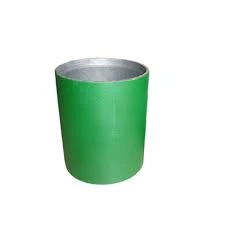- Afrikaans
- Albanian
- Amharic
- Arabic
- Armenian
- Azerbaijani
- Basque
- Belarusian
- Bengali
- Bosnian
- Bulgarian
- Catalan
- Cebuano
- Corsican
- Croatian
- Czech
- Danish
- Dutch
- English
- Esperanto
- Estonian
- Finnish
- French
- Frisian
- Galician
- Georgian
- German
- Greek
- Gujarati
- Haitian Creole
- hausa
- hawaiian
- Hebrew
- Hindi
- Miao
- Hungarian
- Icelandic
- igbo
- Indonesian
- irish
- Italian
- Japanese
- Javanese
- Kannada
- kazakh
- Khmer
- Rwandese
- Korean
- Kurdish
- Kyrgyz
- Lao
- Latin
- Latvian
- Lithuanian
- Luxembourgish
- Macedonian
- Malgashi
- Malay
- Malayalam
- Maltese
- Maori
- Marathi
- Mongolian
- Myanmar
- Nepali
- Norwegian
- Norwegian
- Occitan
- Pashto
- Persian
- Polish
- Portuguese
- Punjabi
- Romanian
- Russian
- Samoan
- Scottish Gaelic
- Serbian
- Sesotho
- Shona
- Sindhi
- Sinhala
- Slovak
- Slovenian
- Somali
- Spanish
- Sundanese
- Swahili
- Swedish
- Tagalog
- Tajik
- Tamil
- Tatar
- Telugu
- Thai
- Turkish
- Turkmen
- Ukrainian
- Urdu
- Uighur
- Uzbek
- Vietnamese
- Welsh
- Bantu
- Yiddish
- Yoruba
- Zulu
Understanding the Distinction Between Casing and Tubing in Drilling Operations
The Difference Between Casing and Tubing in Oil and Gas Operations
In the oil and gas industry, drilling operations rely heavily on two integral components casing and tubing. These elements play crucial roles in ensuring the safety and efficiency of drilling processes. Although they are both essential for well construction, they serve different purposes and have distinct characteristics.
Casing The Structural Backbone
Casing is a series of steel pipes that are inserted into a drilled well to provide structural integrity. The primary purpose of casing is to stabilize the wellbore and prevent it from collapsing. Casing is typically installed after the drilling process reaches certain depths and is cemented in place to create a secure seal. This prevents the migration of fluids, such as oil, gas, or water, into or out of the wellbore, thus protecting fresh water aquifers and ensuring the safety of operations.
Casing comes in several different sizes and weights, depending on the geological conditions and the depth of the well. The types of casing vary, including surface casing, intermediate casing, and production casing. Surface casing, which is the first layer installed, is designed to protect against any shallow hazards and is usually set at a depth that safeguards groundwater from any potential contamination during drilling. Intermediate casing follows, providing additional support and isolation as the well depth increases. Finally, production casing is positioned to directly produce oil or gas from the reservoir, and it often has a smaller diameter compared to the other casings.
Tubing The Conduit for Production
In contrast, tubing is the smaller, inner pipe installed within the casing. Once the production casing is set, tubing is introduced to facilitate the actual extraction of oil or gas from the well. Tubing provides a path through which the hydrocarbons can flow to the surface, enabling efficient production operations. Unlike casing, which is cemented into place, tubing is generally not fixed and can be removed and replaced as necessary for maintenance or upgrades.
what is the difference between casing and tubing?

Tubing is designed to withstand the pressure and corrosive nature of the fluids being transported. It is usually thinner than casing, allowing for a greater flow area for the hydrocarbons. Additionally, tubing can be produced in various grades and sizes, depending on the specific requirements of the well and the type of fluids involved. Tubing strings can also incorporate completion tools, such as packers and valves, that facilitate the control of flow and pressure during production.
Key Differences
The main differences between casing and tubing boil down to their functions and installation. Casing is focused on well integrity and protection, preventing fluids from contaminating surrounding formations, whereas tubing is directly involved in the production process, allowing hydrocarbons to flow from deep underground to the surface.
Moreover, casing is installed first and is cemented to provide structural support to the well, while tubing is placed later inside the casing and remains removable. Casing is generally thicker and designed to withstand external pressures and potential wellbore collapse, while tubing is thinner and designed for internal pressures during production.
Conclusion
In summary, casing and tubing are vital components of oil and gas drilling that serve distinct yet complementary roles. Understanding the differences between them is crucial for anyone involved in the industry, from engineers to field operators, as these components significantly impact the safety, efficiency, and success of oil and gas operations. Their proper installation and maintenance help to safeguard the environment while maximizing resource extraction, making them indispensable in the modern energy landscape.
-
Tubing Pup Joints: Essential Components for Oil and Gas OperationsNewsJul.10,2025
-
Pup Joints: Essential Components for Reliable Drilling OperationsNewsJul.10,2025
-
Pipe Couplings: Connecting Your World EfficientlyNewsJul.10,2025
-
Mastering Oilfield Operations with Quality Tubing and CasingNewsJul.10,2025
-
High-Quality Casing Couplings for Every NeedNewsJul.10,2025
-
Boost Your Drilling Efficiency with Premium Crossover Tools & Seating NipplesNewsJul.10,2025







